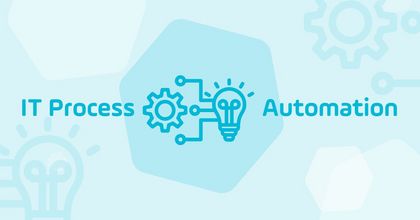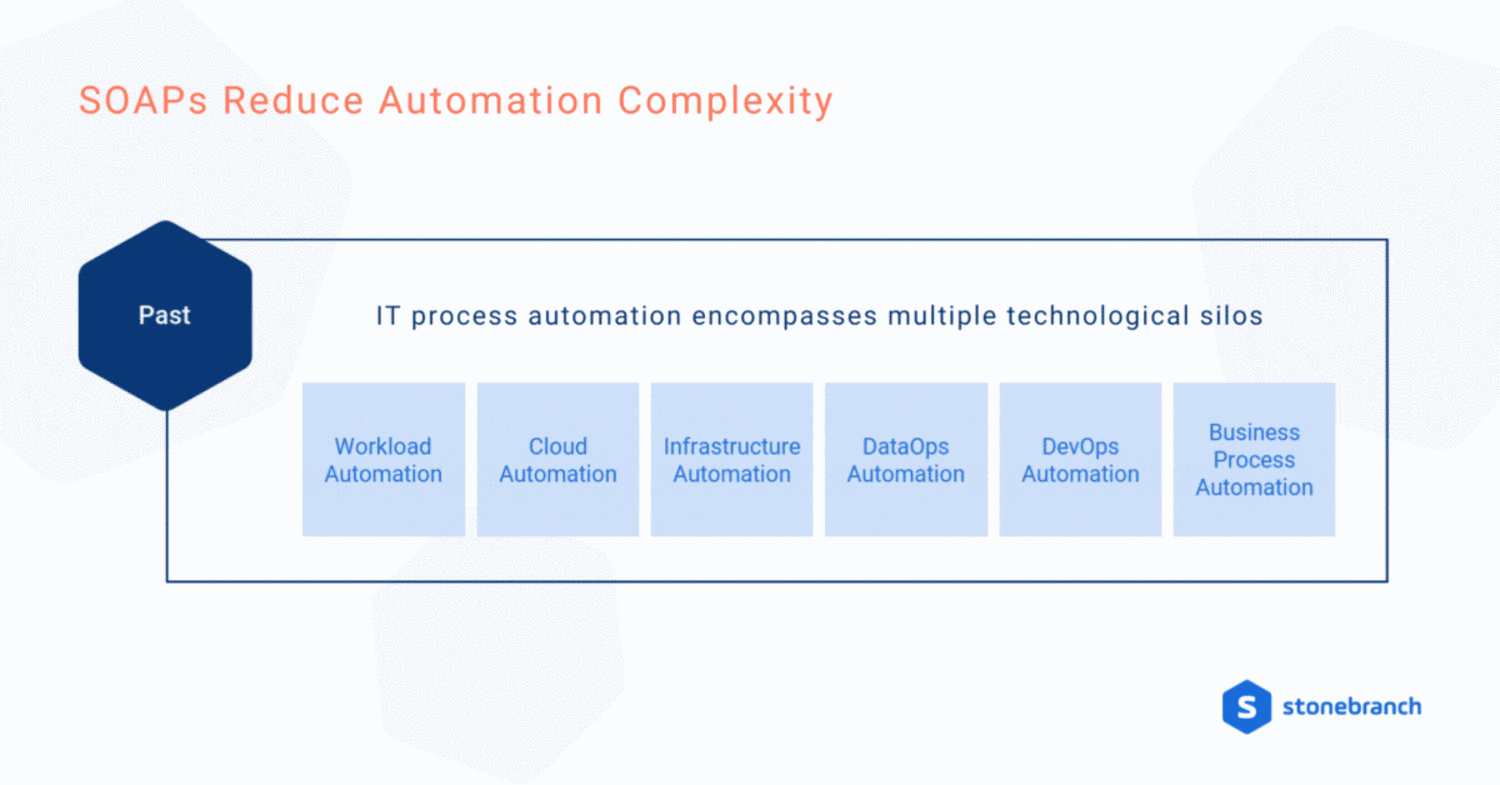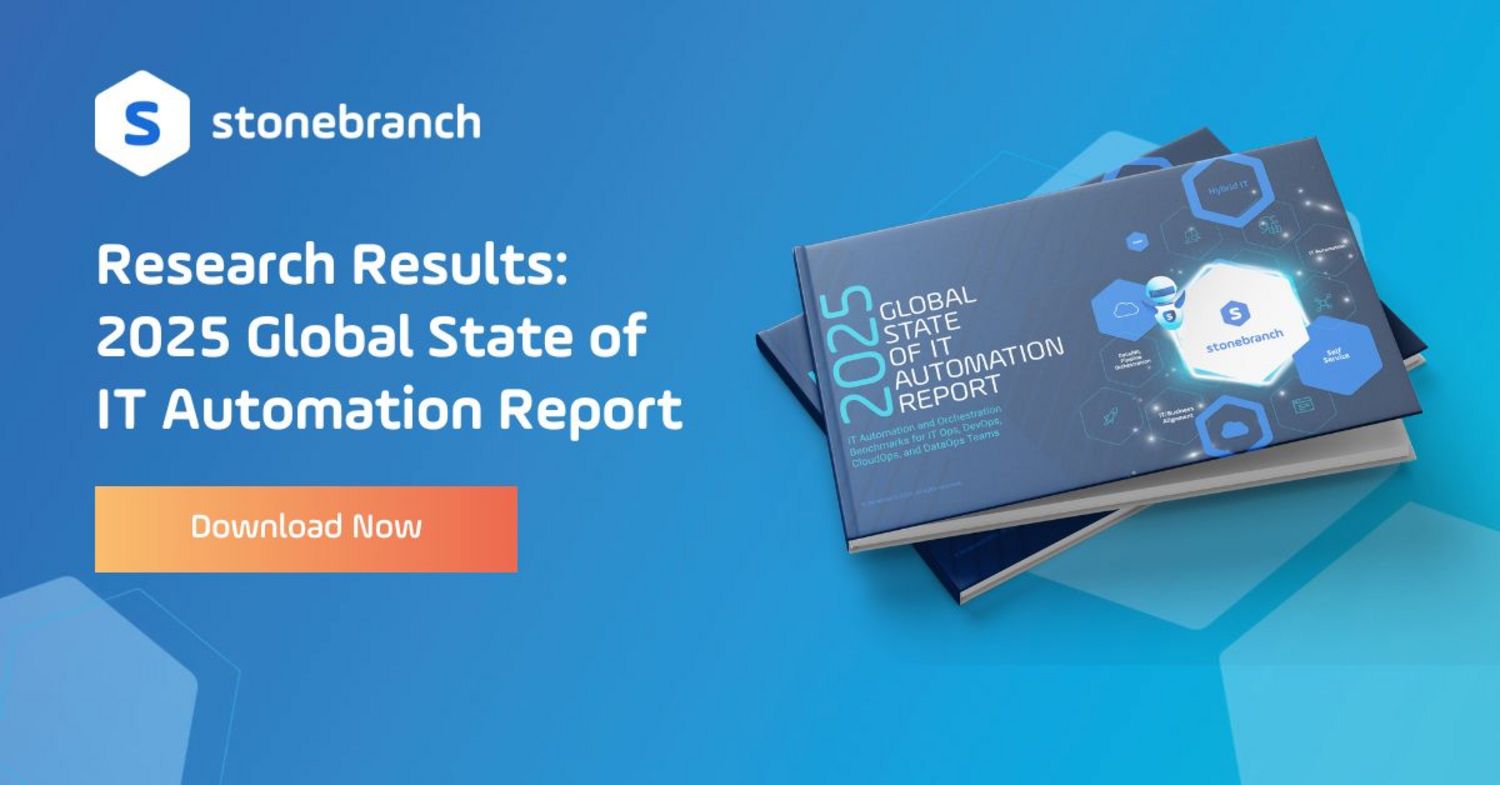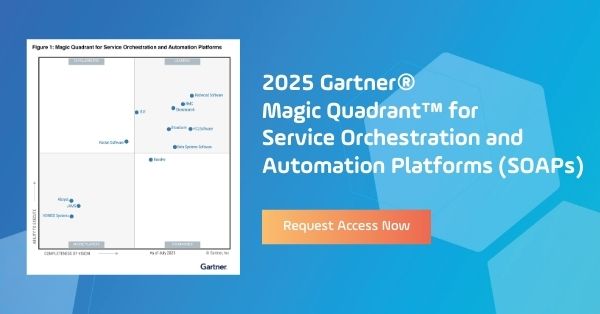IT Process Automation Made Simple
How businesses manage workloads by automating background processes and combating the complexity of today’s hybrid IT environments.

IT Process Automation (ITPA) is used by enterprises of all sizes to speed up and automate labor-intensive or repetitive tasks. Menial tasks subtract time from IT's schedule and leave no room for innovation, optimization, or efficiency.
Here’s a simple fact: business today happens much faster than human beings can process it, and that’s not going to change any time soon.
So, with automation tools in mind, how can companies keep up with growing demands, scale their work, and increase the speed of business? Believe it or not, the solution is well within reach for most businesses — if not all — to some degree. Let’s unpack the answers.
The Challenges of Labor-Intensive IT Processes
Many IT teams are overworked and under-optimized. As a result, they’re incredibly inefficient. They lose ground exponentially as the business speeds up.
Using developers as an example, many devs would agree that getting bogged down in managing commits, queues, and backlogs is the last place they want to spend time. Teams want to add value and develop innovative things — not just keep the lights on.
The good news is that many of the processes that bog down IT teams are repetitive. They also share a variety of simple use cases that are primed for automation to be applied. Or, more specifically, IT process automation.
What is IT Process Automation?
IT process automation (ITPA) is the use of technology to automate repetitive tasks and manual processes throughout the IT environment, including:
- Workload automation
- Cloud automation
- Infrastructure automation
- DataOps automation
- DevOps automation
- Business process automation
Each silo has its own unique tasks, processes, and specialized process automation solutions. ITPA tool fragmentation isn't just inefficient; it's a breeding ground for errors and delays.

Today, service orchestration and automation platforms (SOAPs) redefine IT process automation by providing a central platform capable of controlling and connecting workflows across all these areas. By unifying and streamlining workflows across the entire IT stack, SOAPs offer simplicity where there was once complexity.
SOAPs are the Key to Cohesive IT Process Automation
To put it simply, no one wants to do the same thing over and over again at work. Whether it's employee onboarding or service requests, implementing automated workflows is the key to a productive and satisfied team. Process automation works by identifying and defining a series of steps or tasks that can be executed without the need for manual intervention. From there, it's a matter of selecting the right process automation software and creating workflows for automated processes.
Here at Stonebranch, we help businesses manage their workloads by automating complex business processes and combating the complexity of today’s hybrid IT environments. Our clients iterate faster and manage their operations better.
Stonebranch Universal Automation Center (UAC) is a leading SOAP that helps enhance the automation capabilities of business IT environments, allowing them to move beyond simple IT task automation to more sophisticated, real-time business service automation. UAC is available as an on-prem or SaaS solution, but it’s the same browser-based solution regardless of where it’s hosted. UAC enables IT Ops teams to:
- Act quickly in the face of mission-critical disturbances
- Avoid labor-intensive manual changes to their system
- Centralize control of tasks and business processes
- Restore system breakdowns immediately
SOAPs like UAC are the linchpin of automating complex IT processes. They reduce complexity, help improve productivity, reduce operational costs, and enhance accuracy within the IT team. SOAPs also encourage faster turnaround times and better business process management. Curious what else a SOAP can do? Check out this blog post to learn more.
Start Your Automation Initiative Now
Schedule a Live Demo with a Stonebranch Solution Expert






